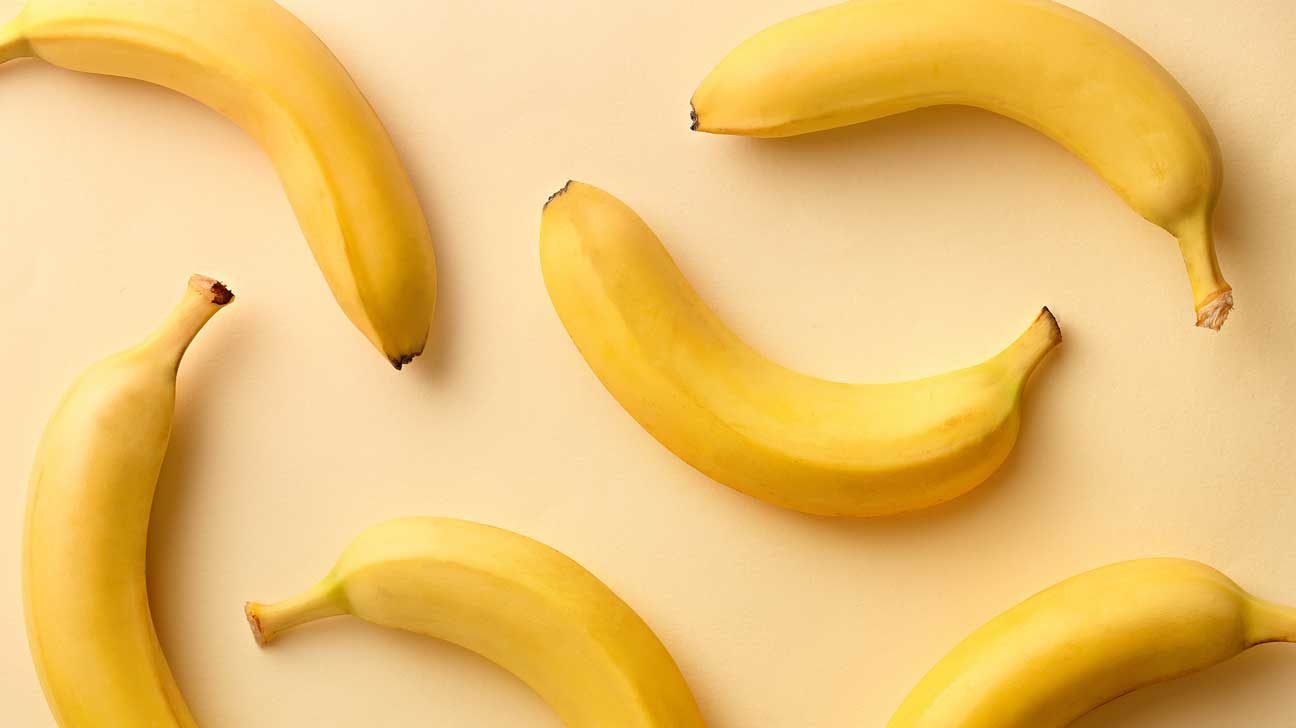You know how it goes. Monday rolls around and you have big plans to exercise before work and prepare an Instagram-worthy egg white omelet.
Then reality sets in, and at 10 a.m. you find yourself sprinting for the office while reaching for “old faithful” — a banana.
Fortunately, this most convenient of fruits has your back in more ways than you may realize, especially if you have diabetes.
Let’s peel back the facts.
One medium banana contains:
- 105 calories
- 27 grams carbs
- 3 grams fiber
- 14 grams sugar
- 10 milligrams vitamin C
- 422 milligrams potassium
- 88 grams water
Not all carbs are created equal
As you can see, bananas are high in carbs and sugar, which do raise blood sugar.
But bananas also contain fiber, which is important if you have diabetes because it can slow digestion and the absorption of carbs, prevent blood sugar spikes, and improve overall blood sugar control.
Of course, bananas are famous for their potassium content.
Here are some awesome things potassium can do:
- decrease risk of stroke
- lower blood pressure
- reduce the formation of kidney stones
- support bone and muscle strength
Bananas are also high in antioxidants, which are thought to prevent the development of type 2 diabetes, as well as other chronic conditions like heart disease and some cancers.
It should be! Bananas are a great choice for people with diabetes because along with their fiber content, they are high in resistant starch.
These facts contribute to the banana’s low score on the glycemic index (GI) and low glycemic load (GL) — measurements of how much a food affects blood sugar.
What are resistant starches?
Resistant starches are long chains of glucose that function much like fiber. They are “resistant” to digestion in the upper part of the stomach and won’t cause your blood sugar levels to rise.
Studies have shown that resistant starch improves insulin sensitivity and reduces inflammation in people with type 2 diabetes.
And know what’s super cool? Resistant starch has a second-meal effect, meaning if you eat a breakfast containing resistant starches — like a banana — it will help prevent a blood sugar spike at lunch.
Fun fact: Green unripe bananas contain less sugar than their ripe, yellow brethren and more dietary fiber in the form of resistant starch and pectin.
A good rule of thumb is that the more ripe a banana is, the higher its sugar content is. This is why a banana can rank anywhere from 42 to 62 on the glycemic index.
If the ripeness of a banana matters, then — you guessed it — so does portion size!
As with any food, bigger portions mean higher sugar content. So watch out for those mondo bananas you sometimes see and instead opt for a more reasonably sized fruit.
Glycemic load is a measurement tool that accounts for carb content as it relates to portion size and how quickly it raises blood sugar. Larger bananas have a higher glycemic load and a greater effect on blood sugar level.
On a low-carb diet?
While bananas are considered healthy and safe for people with diabetes, they might not be a good fit for you if you’re on a low-carb eating plan. Even a small, newly ripened banana contains at least 22 grams of carbs.
Even though bananas are high in carbs and sugar, you can eat them without making your blood sugar go bananas!
- Stick with whole, raw bananas. There are so many ways to enjoy bananas. But those that are dried, fried, salty, or processed into chip form are usually not as healthy as bananas in their natural state. This is because they often contain added sugar or may be cooked in oils that are high in saturated fat.
- Balance your fruit intake. Spread out your fruit intake throughout the day to keep your blood sugar levels stable.
- Choose wisely. When selecting a banana, choose one that’s smaller and just underripe to keep the sugar content lower.
- Pair it with protein and healthy fat. Slice a small banana into a bowl of plain Greek yogurt for added protein and healthy fat. This combination will lower the spike in blood sugar and keep you feeling full longer.

